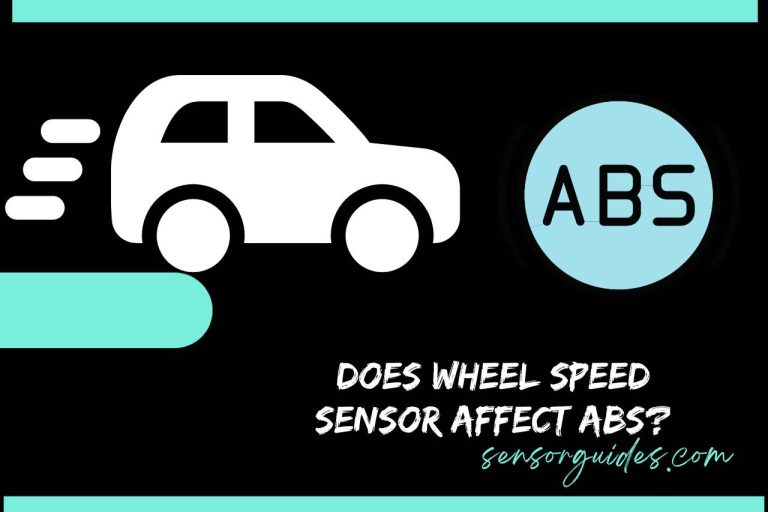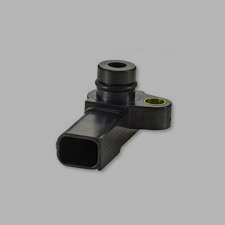Navigating Trouble: The Telltale Signs of a Bad Map Sensor and How to Conquer Them! – 2023
Introduction – Bad Map Sensor
Setting the Stage
The global of automobile engineering is a complicated and ever-evolving panorama, wherein complex components artwork in unison to supply the general performance, overall performance, and reliability we’ve come to expect from modern-day cars. Among those complex additives lies the manifold absolute stress (MAP) sensor, a crucial detail in optimizing engine usual overall performance and gasoline financial system.

Importance of a Well-Functioning Map Sensor
The MAP sensor plays a pivotal characteristic in making sure the easy operation and highest quality overall performance of an internal combustion engine. Its primary function is to expose the stress of the air coming into the consumption manifold, a critical parameter that at once affects the engine’s air-gas combination ratio. By correctly measuring manifold strain, the MAP sensor gives essential remarks to the engine manage module (ECM), allowing it to alter gasoline injection and ignition timing for that reason.
A properly-functioning MAP sensor is important for keeping a balanced air-gas aggregate, making sure whole combustion and minimizing dangerous emissions. Moreover, it contributes to stepped forward fuel performance, as it permits the ECM optimize gas delivery based on actual-time engine needs. Conversely, a malfunctioning MAP sensor can motive quite a number problems, in conjunction with engine misfires, tough idling, and reduced gas economic system.
What to Expect in This Guide
This complete guide delves into the intricacies of the MAP sensor, exploring its essential principles, operational characteristics, and its importance in contemporary car systems. We’ll discover the intricacies of manifold stress size and its impact on engine performance, gas performance, and emission manage. Along the way, we are going to dispel not unusual misconceptions and offer insights into troubleshooting MAP sensor-associated troubles.
What is a Map Sensor?
Definition and Basics
The manifold absolute strain (MAP) sensor, additionally called the intake manifold strain (IMP) sensor, is an electronic tool that measures the pressure of the air getting into the intake manifold of an inner combustion engine. Manifold stress is a essential parameter that indicates the amount of air available for combustion. By monitoring manifold stress, the MAP sensor affords valuable input to the engine manipulate module (ECM), permitting it to optimize gas injection and ignition timing for green and powerful engine operation.
Role in Engine Performance – Bad Map Sensor
The MAP sensor plays a vital position in preserving most reliable engine overall performance. By correctly measuring manifold stress, it lets in the ECM to regulate gasoline injection and ignition timing based on actual-time engine demands. This guarantees that the engine gets the correct quantity of fuel for whole combustion, resulting in smoother operation, advanced strength output, and decreased emissions.
Connection with Fuel Efficiency
The MAP sensor additionally contributes appreciably to gasoline performance. By offering correct manifold strain records, it enables the ECM optimize gasoline delivery, making sure that the engine gets most effective the quantity of gasoline vital for combustion. This prevents immoderate gasoline consumption and maximizes gas economic system.
The MAP sensor is an important factor in modern automotive systems, gambling a pivotal role in optimizing engine overall performance, gas efficiency, and emission control. Its capacity to appropriately degree manifold stress and offer actual-time feedback to the ECM makes it a key contributor to a smooth, efficient, and environmentally accountable riding experience.

Why Map Sensors Matter – Bad Map Sensor
Crucial Role in Engine Control
The MAP sensor is an integral aspect in present day engine manage systems. It continuously monitors the strain of the air getting into the consumption manifold, supplying actual-time feedback to the engine manipulate unit (ECU). This facts is crucial for the ECU to calculate the air-fuel mixture ratio, a crucial parameter that at once impacts engine overall performance, emissions, and gas performance.
Without an correct MAP sensor studying, the ECU could be not able to determine the correct quantity of fuel to inject into the combustion chambers. This could cause a number of troubles, together with:
- Engine misfires: If the air-gas mixture is just too lean (not sufficient gasoline), the engine might also misfire, inflicting tough idling and electricity loss.
- Excessive gasoline intake: If the air-gas combination is simply too wealthy (too much fuel), the engine will waste fuel and emit harmful pollution.
- Incomplete combustion: Improper air-gas combinations can cause incomplete combustion, ensuing in improved emissions and reduced engine efficiency.
Impact on Emissions
The MAP sensor plays a giant function in lowering harmful emissions from inner combustion engines. By making sure an most fulfilling air-fuel mixture, it contributes to purifier combustion, minimizing the manufacturing of pollutants which include carbon monoxide (CO), hydrocarbons (HC), and nitrogen oxides (NOx). These pollutants are main members to smog, acid rain, and breathing problems.
Relationship with Overall Vehicle Performance
The MAP sensor’s impact extends past emissions manipulate, affecting universal automobile performance. By optimizing fuel injection and ignition timing primarily based on actual-time engine needs, the MAP sensor contributes to:
- Improved fuel financial system: Accurate manifold pressure measurements help the ECU supply the perfect quantity of gasoline required for combustion, decreasing gas intake and maximizing mileage.
- Enhanced power output: An foremost air-gas combination ensures that the engine gets the correct quantity of oxygen for complete combustion, leading to accelerated strength and torque.
- Smoother operation: Proper fuel injection and ignition timing contribute to smoother engine operation, reducing vibrations and providing a more refined riding enjoy.
In essence, the MAP sensor is an unsung hero in modern-day automotive systems, quietly working behind the scenes to optimize engine overall performance, emissions manage, and fuel performance. Its capability to offer accurate manifold strain records is vital for ensuring a smooth, green, and enjoyable using revel in.

How Map Sensors Work – Bad Map Sensor
Sensor Operation Demystified
The MAP sensor is a surprise of engineering, changing a physical parameter (manifold strain) into an electrical signal that the ECU can understand. Its operation is based on the principle of piezoresistivity, that’s the belongings of certain materials to alternate their electric resistance in response to mechanical stress.
Inside the MAP sensor, a skinny silicon diaphragm is uncovered to the strain of the intake manifold. As the pressure increases, the diaphragm flexes, causing a exchange in its electric resistance. This exchange in resistance is measured and transformed into an electrical signal this is proportional to the manifold stress.
Interaction with Engine Control Unit (ECU)
The electric sign generated by the MAP sensor is despatched to the ECU, the mind of the engine control machine. The ECU interprets this sign and makes use of it to calculate the air-gasoline aggregate ratio. It then adjusts fuel injection and ignition timing accordingly to preserve most excellent engine performance and emissions manage.
Ensuring Optimal Combustion
By offering accurate manifold pressure information, the MAP sensor performs a critical function in making sure entire combustion inside the engine cylinders. The air-gas aggregate is a delicate balance, and any deviation from the most reliable ratio can result in incomplete combustion, decreased engine performance, and increased emissions.
The MAP sensor’s capacity to offer actual-time feedback to the ECU ensures that the air-gas combination is constantly adjusted primarily based on engine load and running situations. This facilitates to maintain entire combustion, maximizing electricity output, minimizing emissions, and optimizing fuel financial system.
Common Symptoms of a Failing MAP Sensor
Irregular Engine Idling
One of the maximum sizeable symptoms of a failing MAP sensor is irregular engine idling. The engine may additionally idle inconsistently, with RPMs fluctuating up and down. This is because of the ECU’s incapability to keep a steady air-gas aggregate due to faulty MAP sensor readings.
Fluctuating Fuel Efficiency
A failing MAP sensor can also cause fluctuating gas efficiency. This is because the ECU is receiving inaccurate manifold stress information, main to mistaken fuel injection. The engine can also devour extra gas than common, resulting in decreased mileage.
Surging or Hesitating Engine
Another common symptom of a failing MAP sensor is a surging or hesitating engine. This occurs while the engine reviews sudden changes in strength output, inflicting the vehicle to jerk or hesitate. This is because of the ECU’s incapacity to adjust gasoline injection easily based on misguided MAP sensor readings.
Warning Lights on the Dashboard
In some instances, a failing MAP sensor may also cause caution lighting fixtures on the dashboard. The maximum not unusual caution mild is the take a look at engine mild (CEL). The CEL shows that the ECU has detected a trouble in the engine manipulate gadget, and the MAP sensor may be the culprit.
Dive Deeper: Recognizing Specific Signs
Understanding Engine Misfires
Engine misfires are another capability symptom of a failing MAP sensor. Misfires arise whilst one or greater cylinders inside the engine fail to fireplace properly. This can cause the engine to shake, vibrate, and lose electricity. Misfires are caused by a variety of factors, which includes an incorrect air-gas aggregate due to a failing MAP sensor.
Unraveling the Mystery of Stalling
A failing MAP sensor also can purpose the engine to stall, specially whilst coming to a forestall or idling. Stalling takes place whilst the engine stops jogging due to an interruption in the gas deliver or ignition. In some cases, a failing MAP sensor can disrupt the ECU’s control over gas injection and ignition timing, main to stalling.
The Connection Between Map Sensors and Smoke Emissions
Excessive smoke emissions from the exhaust pipe additionally can be a sign of a failing MAP sensor. This is because of the reality a defective MAP sensor can purpose the engine to run too rich, which means that it is receiving too much fuel. This ends in incomplete combustion, which produces more smoke and harmful emissions.
If you’re experiencing any of these symptoms, it’s miles critical to have your automobile’s MAP sensor checked thru a qualified mechanic. A failing MAP sensor can cause loads of issues, and it is satisfactory to address the difficulty as fast as possible to avoid further damage in your engine.
Conclusion – Bad Map Sensor
The MAP sensor, an unassuming but critical trouble of modern-day automobile systems, plays a pivotal function in optimizing engine performance, gas efficiency, and emissions manipulate. Its ability to efficiently diploma manifold pressure and provide actual-time feedback to the ECU ensures a smooth, green, and environmentally responsible riding experience.
When a MAP sensor malfunctions, it may result in a lot of problems, which include unusual engine idling, fluctuating fuel efficiency, surging or hesitating engines, and warning lighting on the dashboard. Recognizing those signs and addressing them promptly is important to retaining top of the road engine operation and preventing similarly harm.
FAQs
How regularly should I replace my MAP sensor?
The frequency of MAP sensor alternative is predicated upon on different factors, consisting of the auto’s age, riding situations, and preservation practices. However, it is usually encouraged to have the MAP sensor checked and changed as wished every 50,000 to one hundred,000 miles.
Can I smooth my MAP sensor instead of changing it?
In some instances, it may be viable to clean a dirty or infected MAP sensor the use of a specialised cleansing solution. However, if the sensor is broken or has reached its quit of existence, cleansing will not be an powerful solution and alternative is essential.
Can a faulty MAP sensor cause my vehicle to fail emissions testing?
Yes, a malfunctioning MAP sensor can cause faulty air-fuel combos, ensuing in excessive emissions that could reason your vehicle to fail emissions trying out. It is crucial to deal with any MAP sensor-associated problems before present process emissions checking out.
What are the predicted fees of MAP sensor alternative?
The value of MAP sensor replacement varies relying on the car make and version, in addition to the exertions costs in your place. Generally, the cost of the sensor itself degrees from $50 to $one hundred, even as exertions costs can upload another $50 to $one hundred.





